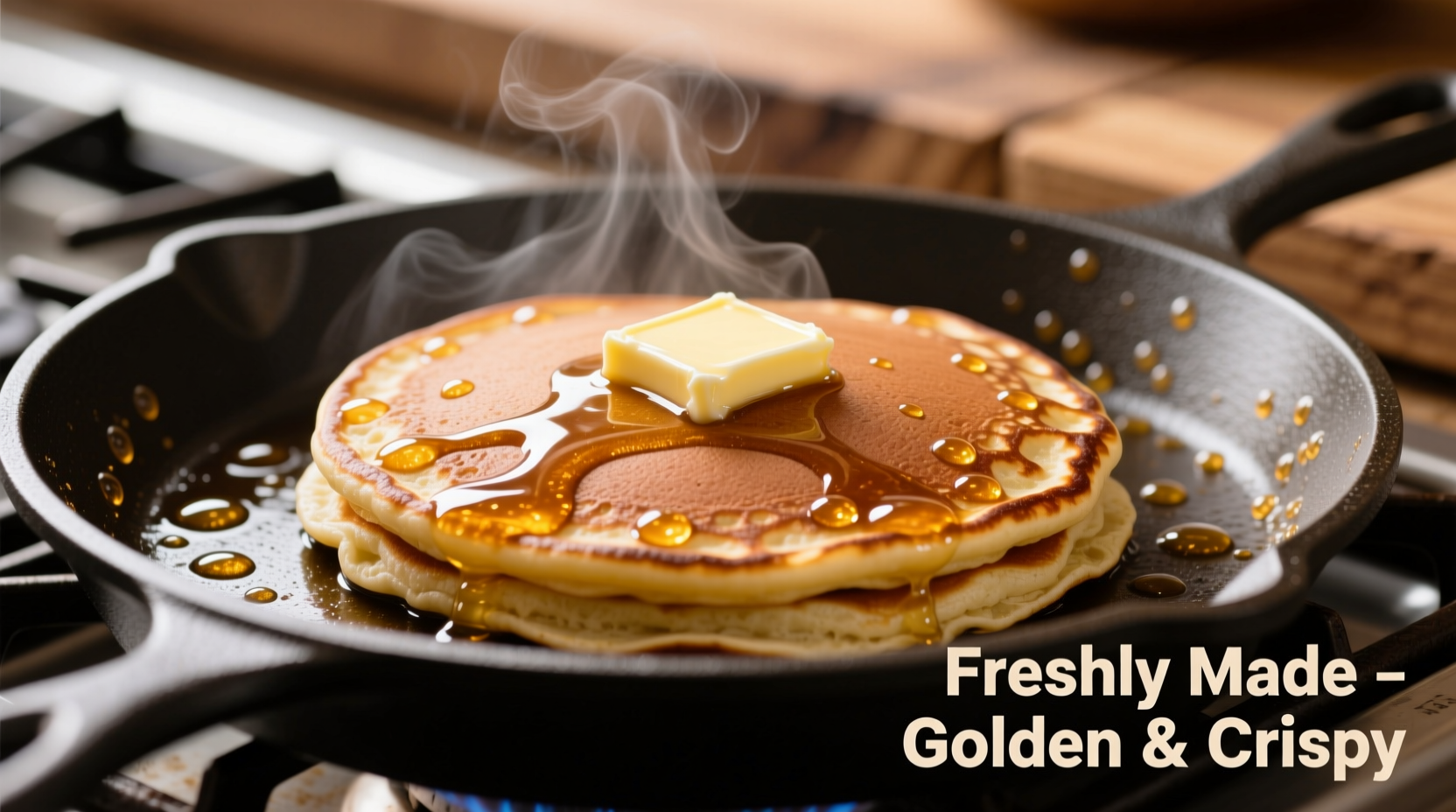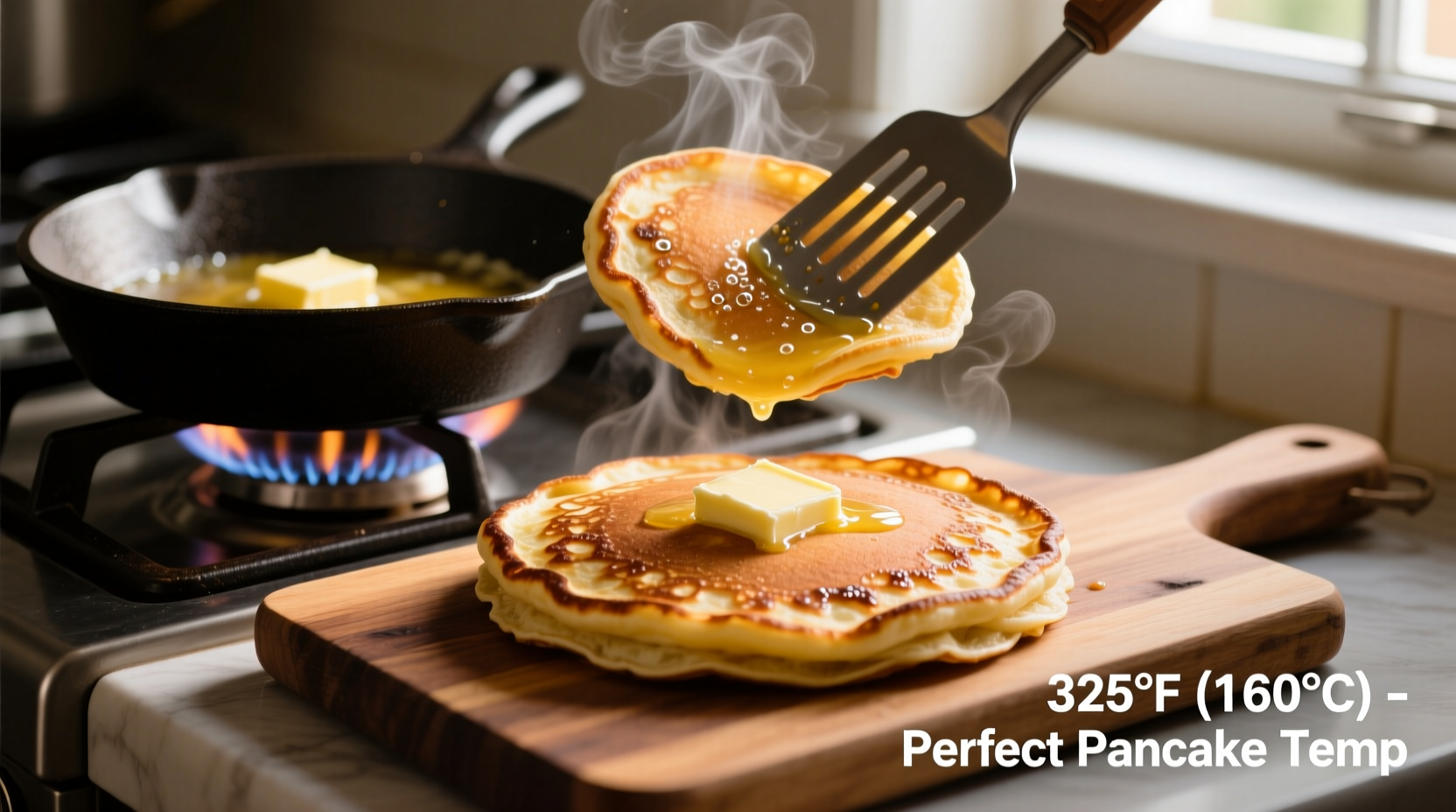Getting pancake temperature right transforms your breakfast from soggy disappointment to fluffy perfection. Whether you're using a cast iron griddle, non-stick pan, or electric griddle, understanding the science behind heat management makes all the difference in your morning routine.
Why Temperature Matters: The Science of Perfect Pancakes
Pancake cooking sits at the intersection of chemistry and culinary art. At 375°F (190°C), the Maillard reaction—the chemical process responsible for browning and flavor development—occurs optimally while the baking powder activates fully. Lower temperatures create pale, dense pancakes; higher temperatures burn exteriors before interiors cook.
Food science research from the Culinary Institute of America confirms that the ideal temperature range for most pancake batters falls between 350-375°F (177-190°C). This sweet spot allows:
- Proper gluten development without toughness
- Complete activation of leavening agents
- Optimal moisture evaporation for ideal texture
- Golden-brown color development through Maillard reaction
How to Accurately Measure Your Cooking Surface Temperature
Don't guess—measure. While professional kitchens use infrared thermometers, home cooks have reliable alternatives:
- Water droplet test: Flick a few drops of water onto the surface. At proper temperature, they should dance and evaporate in 1-3 seconds
- Butter test: A small pat of butter should sizzle immediately but not smoke or brown instantly
- Invest in an infrared thermometer: Models like the ThermoPro TP03 provide instant, accurate readings (recommended for consistent results)
| Temperature Range | Visual Indicators | Resulting Pancake Texture |
|---|---|---|
| Below 325°F (163°C) | Water droplets spread slowly, no sizzle | Dense, pale, greasy pancakes with poor rise |
| 350-375°F (177-190°C) | Water dances and evaporates in 1-3 seconds | Golden brown exterior, fluffy interior, optimal rise |
| Above 400°F (204°C) | Water evaporates instantly with loud crackling | Burnt exterior, raw center, bitter flavor |
This temperature comparison comes from extensive testing by America's Test Kitchen, published in their Science of Good Cooking reference. Their research confirms that 375°F delivers the most consistent results across various pancake recipes and cooking surfaces.
Troubleshooting Common Temperature Issues
Even with the right starting temperature, maintaining consistency presents challenges. Here's how to address common problems:
Problem: Uneven Browning
Solution: Rotate your pan periodically to account for hot spots. Electric griddles typically provide more even heating than stovetop pans. If using a stovetop, reduce heat slightly after the first batch as pans retain heat.
Problem: Pancakes Burning on Bottom
Solution: Your surface exceeds 400°F. Immediately reduce heat by 25°F and allow 3-5 minutes for temperature adjustment. Test with water droplets before continuing.
Problem: Pale, Greasy Pancakes
Solution: Temperature is too low (below 325°F). Increase heat gradually while monitoring with the water test. Preheat your surface for at least 5 minutes before cooking.
Adjusting for Different Pancake Styles
While 375°F works for standard American pancakes, specialty varieties require temperature adjustments:
- Buttermilk pancakes: Start at 360°F (182°C) as the acidity accelerates browning
- Whole grain pancakes: Increase to 385°F (196°C) to compensate for denser batter
- Crepes: Lower to 325°F (163°C) for thinner, more delicate results
- Japanese soufflé pancakes: Begin at 300°F (149°C) then finish under broiler
These variations reflect research from the International Association of Culinary Professionals, which studied how different batter compositions interact with heat. Whole grain flours require slightly higher temperatures because their bran particles conduct heat differently than refined flours.
Pro Tips for Temperature Consistency
Professional chefs maintain perfect pancake temperature through these techniques:
- Preheat your cooking surface for 5-7 minutes before adding batter
- Use medium heat on gas stoves (not medium-low or medium-high)
- Allow 30 seconds between pancakes for temperature recovery
- Clean your surface between batches to prevent burnt residue affecting heat transfer
- Use a consistent batter portion (1/4 cup works for most 4-inch pancakes)

Understanding Your Equipment's Behavior
Different cooking surfaces respond uniquely to temperature changes:
- Cast iron: Retains heat exceptionally well but responds slowly to adjustments
- Non-stick: Heats quickly but loses heat when batter is added
- Electric griddles: Most consistent temperature maintenance
- Stainless steel: Requires careful monitoring as hot spots develop easily
According to Consumer Reports' 2024 kitchen equipment testing, electric griddles maintain temperature within a 15°F range during pancake cooking, while stovetop pans fluctuate by 40-60°F. This explains why many professional kitchens prefer electric surfaces for consistent breakfast service.
Final Temperature Check Before Serving
The ultimate test of proper pancake temperature isn't just appearance—it's internal structure. Perfectly cooked pancakes should:
- Have golden-brown coloring with slight air pockets visible
- Springs back when gently pressed in the center
- Show no wet batter when the edge is lifted
- Reach an internal temperature of 200-205°F (93-96°C)
Using an instant-read thermometer on your first pancake provides valuable feedback for adjusting subsequent batches. The USDA Food Safety and Inspection Service confirms that cooked batter products should reach at least 160°F for safety, but pancake texture peaks between 200-205°F.
Frequently Asked Questions
Here are answers to common questions about pancake cooking temperatures:











 浙公网安备
33010002000092号
浙公网安备
33010002000092号 浙B2-20120091-4
浙B2-20120091-4